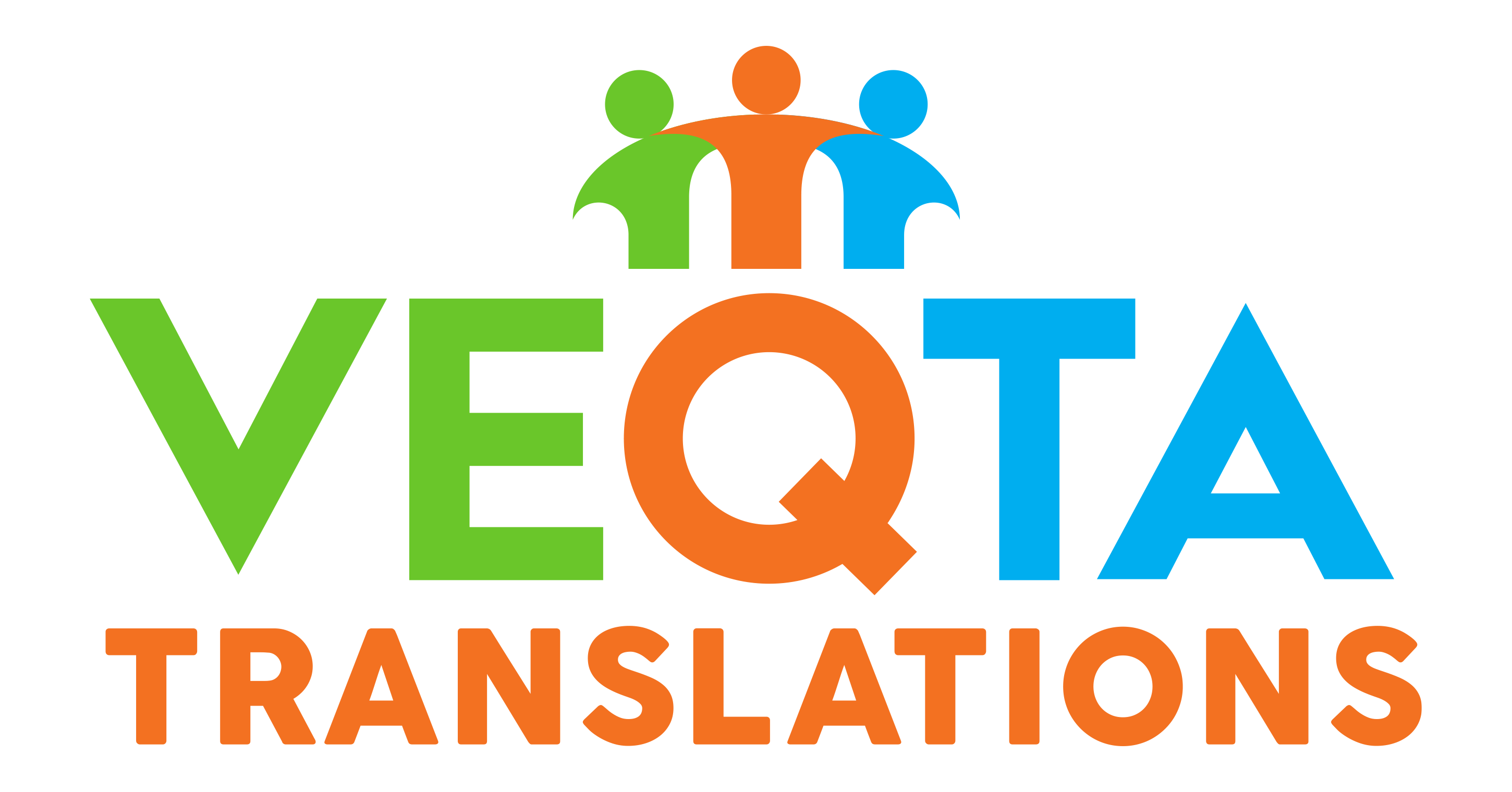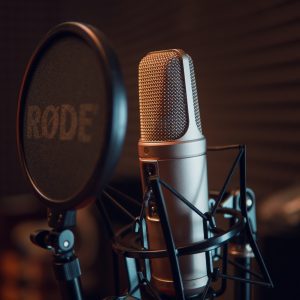Need a quote?
Contact with your Linquistic Translation Specialist Today!
Fast, Accurate & Affordable Translation Solutions!
Get In Touch
Singpore: +65 6829 7058
Malaysia: +60 3 2776 6812
Thailand: +66 98357 8074
info@veqta.com
Voiceover Translation Services
Voiceover Translation & Localization Services
We provide voice over dubbing recorded in a state-of-the-art studio in Malaysia and a recording studio in the heart of Bangkok, Thailand. We work with local experienced voice talents and enthusiastic expatriate dubbing actors (voice-talents) with native language proficiency that come from all walks of life.
Professional dubbing need to consider the end-user environment, medium and platform and address specific requirements -there’s a big difference between voice over recorded in a Foreign Language for a documentary, or a lip-synced Satellite TV Show, or creating audio for a voice-over for an IVR (Interactive Voice Recognition System), e-learning course, text to audiobook translation, the web, YouTube or a Go-to-market e-learning course audio solution with multiple multilingual menu systems and play options.
Our Voiceover Translation Services specialize in voice translation and dubbing for corporations, broadcasting, jingles, in-flight entertainment systems, instructional videos, and dubbing for the movie industry with stereo mixing. Our wide varieties of options for audio content translation include:
- Mixing Audio for Film
- Scene-Synced
- Video Voice Translator
- Off-screen voice-over, un-synced cold recording
- Video localization
- Time coding
- Video Audio Translator
- ADR, Audio Dialogue Replacement
- Foley work
- Sound recording mixing mastering Dolby E
- Music scoring
- Professional sound engineering
- Audio translation services
- Lip syncronization, lip syncing
- Voice modulation
- Freelance voiceover
- HDV rendering
- Audio & Video (AV) translation
- Mixing SoundFX
- Transcription Translator
- Audio engineering
- United Nations type of background audio overlay
- Mixing in Stereo; 2.0, 5.1 or 7.1 surround mixing
- Translation Audio to Text
- Translate Audio from Video
- Language monitors & sound directors
Translating Transcripts
The end result will only ever be as good as the script available to record. It’s critical the script or the translation of the script is translated for voiceover and narratives that will be read out loud. The voice-translator needs to have the original source audio available to match style, context, matching a distinct type of voice, and timing.
The voice talent selection might be based on the preference of demographics and style-specific characteristics. To ensure we appoint the best overall voice-over talents from our database that meet your selection-criteria and multilingual requirements for Studio voiceover recording, our clients may listen to voice samples from our archive of demo reels which contains audio snippets recorded as a sample to evaluate his/her tone of voice, style, and accent. Our trusted Studio Managers can be consulted for a professional result; with many knowledgeable audio technicians working for us, we have an eye (and an ear) for what each recording project requires.
Lip Sync and Synced Recording
Translation text expansion or target language contraction may occur after translation into the target language which means the translated script becomes shorter or longer than the original source text. This needs to be managed as it means it takes longer or shorter time to articulate the same sentence in the target language. An experienced voice translator needs to carefully consider both shorter or timed productions such as fast-paced broadcasting recordings or dubbings at a more natural speaking speed. Voice translators creating a translation for lip syncing may need to work with a stop-clock to get the timing right.
Avoid Expensive Re-recordings!
It important the translated transcript is signed-off and approved for recording prior to booking the Studio as unnecessary re-recordings may cause delay or incur additional unnecessary expenses that could easily have been avoided.
 Dubbing Process
Dubbing Process
The voice talents will modulate the voices as needed for additional characters. Additional voice talents can be added. The voiceover track will have access to view the video on a monitor during the recording which enables the voice-talents to view the speaker in the video and re-enact the mood and tone of voice of the speakers in the episode. The audio engineers are carefully listening to the recording and monitor the audio signal on a monitor. The voice soundtrack is recorded as uncompressed raw audio before any audio mixing as required.
During the recording session, a Language Monitor will be present who checks the linguistic aspect of the speech during the dubbing session to ensure the voice talent’s pronunciation is commonly accepted and typical for that language locale and is clear and articulated properly. Any deviations or non-observance of the pronunciation guide is noted and the voice-talent is immediately requested to correct the mistake.
Voiceover Translation Rate per Minute
Our standard voice over rate quoted depends on seat time, corporate use or broadcasting, synced or non-synced and number of voice talents or characters required. Please get in touch to get our best rate for your Voiceover Translation recording project.
What Type of Audio Format do I need?
- MP3, MPEG-1, Layer 3 is a format which compresses the audio file data to around 1/12 of the original size and is, therefore, suitable for use online due to relatively short upload/download times.
- WAV format (Waveform Audio Format) is a standard raw uncompressed audio format for Windows which has a widespread use. Compression at 128 kbps at a 44.1 kHz sampling rate is known as being of CD quality.
- FLAC and Apple lossless offer lossless audio formats which is a popular format also.
- Technical specifications can be discussed and accommodated as required e.g. video integration or video rendering. If you have no idea of file formats, we will advise on appropriate options depending on the platform the audio will be used.
Types of Voiceover Translation Recording
Knowing which type of voice recording you need and what the differences are will help you request translations, monitor job status, and listing specific requirements.
Untimed or ‘cold recording’ refers to dubbing recorded at a natural pace of narration without time constraints or syncing. Such audio files are suitable for PowerPoint presentations, Camtasia, audio snippets for games, e-learning audio books, instructional demonstrations, voiceover commands, in-flight systems presentations , eLearning, voiced medical narrations, online platforms, or phone menus or car entertainment menu systems or any interactive multimedia with navigation audio play buttons.
Timed or ‘warm’ recording is synced to adapt to changes of scene e.g. synced to a video track or animated video or cinema production. The audio narration matches the plot unfolding or onscreen text (OST). The voice talent usually views the video on a monitor, or is provided live video direction, or listen to the original soundtrack via a sound reinforcement system during the voice-over narration. Any video with changing scenes can be considered a warm recording e.g. a safety instruction video with a change of events on the screen or a ‘talking head’ video which still needs to have its audio synced with the video to make sense.
Lip-sync or hot recording refers to when voice actor matches and moves the lips in sync with a soundtrack and the on-screen characters. Professional lip syncing is often part of film and music track and audio-visual recordings though also used in some corporate or broadcasting productions. The process in such settings can become very complex with use of translators counting a number of vowels and use slow-motion effects in more elaborate post-production techniques to achieve the desired polished result.
Games Recording
Gaming localization often makes use of lip-syncing sound files to give the impression of speech for the on-screen characters of the game. Often voice modulation is made to create characters by skilled voiceover artists. A talented voice over artist can usually modulate 3 to 5 voices but individual abilities may vary. Recording for MMO Games / MMOG (A massively multiplayer online game) or massively multiplayer online role-playing game (MMORPG) is a skill that requires enthusiastic gaming fanatics with a natural talent for bringing the spirit and mood of the game to life by awesome voice acting and action! Larger productions can also have an additional Studio Director present to manage the session and give pointers to the actors in addition to the language monitor.
Studio Pre-production
The Pre-Processing: phase involves planning the Studio recording in advance; setting up the control board and sound system, software, the dubbing timeline, microphone selection, dialog and character studio planning , collating reference materials and making scripts available in advance to voice talents, appointing language monitors and sound/studio directors who are partaking in the session. The voice talents will be familiarized with the scripts in advance and clarify any specific pronunciation in the source. This takes place before booking in the voice talents to come to the Studio for the daily recording.
Audio Mixing
The audio team provides professional audio mixing, file-splitting, checks on pitch levels to avoid capped peaks, crackles, background noises, lisps the microphone picked up, pops, hizzes, noises, buzzes or edgy tones are all corrected as needed. If a so-called United Nations-style overlay recording has been made, the original soundtrack overlay is checked via the mixing console. A U.N style dubbing refers to when the original sound has been kept faint in the background as a backdrop with the new audio as an overlay on top.
Audio Linguistic Quality Checks
After the completed recording a linguistic quality evaluation is performed by a native linguist as a final audio quality assurance (QA) control measure. This is a final check that ensures the spoken audio is read at normal voice and pace, or modulated as specified, and is free of linguistic slip-ups or misreading. The linguist listens to the audio again and if any errors are heard, this is communicated back to the voice talent who will be booked in to re-record this section in the Studio for a high-quality service from beginning to end.
What is a Pronunciation Guide?
A pronunciation guide is a document meant to provide guidance for the recording artists when they articulate and pronounce the words of the script and provides directions how to provide certain terms that may be difficult to pronounce or have alternative ways of pronunciation. Example: ‘2017’ could be read out loud as ‘twenty seventeen’ or ‘two thousand and seventeen’. Acronyms, names, numbers, dates, places, measurements, types of units and foreign words may have alternative ways to be narrated, accented and pronounced, all which may be equally correct and accepted in different locales. Therefore, such terms should be identified and listed in a pronunciation guide which should be checked and approved by the end-client. This document may also incorporate any instructions regarding the pronunciation of any names, jargon or terms or tone of voice instructions if received from the client.
The Pronunciation Guide (PG) can also be accompanied by pronunciation guide audio (i.e mp3 or wav files) or links to audio references. The pronunciation guide documents any input, feedback or preference provided by the client or recommendation by the voie translators. Websites such as ‘how do you say it’ which is a Pronunciation guide dictionary provides phonetic audio-recoded on how to pronounce different terms (in English) to help with English Pronunciation Guide creation. Most commercial languages e.g for creating a Mandarin pronunciation guide or a Thai pronunciation guide etc have equivalent online audio references.
Get in touch with us today to speak to a VEQTA Voiceover Translation Services specialist.
SERVICEs OVERvIEW

Document Translation
Professional document translation helps your business communicate clearly and efficiently with your team and customers. We're adept at translating general business papers, specialized scientific content (including technical terms), and industry-specific materials. VEQTA’s content translation services not only focus on technical translation but also on adapting content to resonate with the target audience. Our expertise ensures that every translation maintains its original intent while bridging cultural and linguistic gaps.

Desktop Publishing Translation
Translating content is only half the battle. We're here to ensure your content not only reads right but looks impeccable. How it's presented visually can make or break your global communication efforts. That's why our Multilingual Desktop Publishing team couples linguistic expertise with design proficiency. We adapt layouts, images, fonts, and more, ensuring that your materials resonate with your target audience, both linguistically and aesthetically.

eLearning Translation
VEQTAs eLearning localization is a meticulous process that ensures your course materials resonate with learners from various backgrounds. Leveraging platforms like Articulate Storyline, our approach localizes text, the backbone of any educational module, multimedia elements, graphics, video and audio clips and carefully adapts it to maintain its original intent while catering to a diverse audience.

Interpretation Translation
VEQTA offers premier interpretation services tailored to the unique demands of international conferences and business meetings. Whether you're hosting a global summit or negotiating a cross-border deal, our interpreters are at the forefront, ensuring every word spoken resonates with clarity and authenticity.

Linguistic Assessment Translation
VEQTA can perform independent reviews of legacy translations for evaluation purposes or to improve accuracy of legacy translation by combining it with post-editing. Older translations can often benefit from a fresh pair of expert eyes to ensure they meet the most relevant terminologies and linguistic standards. VEQTA recognizes this need and offers a comprehensive linguistic review service tailored to breathe new life into your legacy content.

Localization Governance Translation
VEQTA offers a unique Localization Governance Service that melds top-tier consultation with impeccable translation flow management. We work closely with businesses to deeply understand their localization and translation needs. Through our bespoke localization consultation, we offer insights, strategies, and solutions tailored to each business's unique challenges and objectives.

Subtitle Translation
Our team of linguistic experts and subtitling professionals creates subtitling services that are accurate in translation and precise in timing. We pay meticulous attention to detail, ensuring that the length, reading speed, and synchronization of subtitles align perfectly with the on-screen visuals and audio cues.

Transcription Translation
Our team of seasoned transcriptionists is trained to decipher varied accents, dialects, and speech nuances, ensuring that the essence of the spoken content is maintained in its written form. The transcription process at VEQTA Translations is bolstered by state-of-the-art technology, allowing us to handle large volumes of audio and video files while maintaining a quick turnaround time.

Voiceover Translation
VEQTA Translations can deliver complete and professional multilingual audio and video production services. Our turnkey voiceover dubbing services encompasses everything from script translation and adaptation to casting the right voice talents, ensuring a perfect match. VEQTA’s studio is equipped with cutting-edge technology, facilitating pristine audio quality and seamless post audio engineering and synchronization with on-screen visuals.

Website Translation
Our website translation services encompass a comprehensive range of features, from linguistics to website elements. We expertly handle code tag protected variables, graphics—whether static images or animations. A significant aspect of our services lies in ensuring flawless operability for non-Latin-based languages. Beyond mere translation, we emphasize local relevance by incorporating local terminology and expressions. We have a rich history of translating industry-specific content, with specialties in areas like manufacturing, software, tourism, and retail.
WHY VEQTA TRANSLATIONS?
VEQTA Translations offers turnkey translation and comprehensive localization solutions in over 200 languages, ensuring content adaptation for diverse audiences. Our team consists of native speakers skilled in various domains. Beyond mere text, we handle everything from website localization to video subtitling, ensuring brand consistency. Our certified linguists undergo rigorous vetting to guarantee top-quality results. Our multimedia adaptations and desktop publishing services maintain the original feel of your materials. Each project is overseen by a dedicated manager to ensure timely delivery and consistent quality. With VEQTA, you receive a streamlined, professional service catered to all your translation needs. We offer transparent and competitive pricing and fast turnaround times.
VEQTA is a member of both the ATA (American Translators Association) and CATI (Carolina Association of Translators and Interpreters). All of VEQTA’s translators hold professional certifications based on language and country, such as the ITBM certificate for Bahasa Malay. VEQTA employs only native-speaking translators who possess a Bachelor’s Degree and have passed rigorous language testing programs. Every translator has a minimum of 5 years of experience, while our editors boast experience ranging from 9 to 17 years.
All project-related communication is channeled through the assigned Project Manager. This ensures streamlined and efficient communication, as the Project Manager serves as a central point of contact. Our translators might not be located in your locale, may operate in different time zones, and given that projects often involve multiple languages, it’s most efficient to have all communications pass through the Project Manager. However, if there’s a pressing need for direct communication with a translator, such as discussing specifics in the target language, we can facilitate a video conference call to address your concerns.
After the project has been scoped, quoted, and handed off, the source material is prepared by the Project Manager and assigned to the translators. The translation undergoes a three-step process: Translation, Editing, and Proofreading, all performed by human translators and editors. If ordered, Desktop Publishing is carried out, followed by a final QA check before delivery. After delivery, the team remains available to address any additional requirements.
Yes, service customization is available and can be tailored based on your specific needs
Yes, at VEQTA, each client is assigned both an account manager and a project manager.
At VEQTA, we prioritize the confidentiality and security of our clients’ information above all else. To begin with, all of our staff and translators are bound by strict Non-Disclosure Agreements (NDAs) that protect your data and any associated intellectual property. Furthermore, we adhere to global data protection standards, including the European General Data Protection Regulation (GDPR), which ensures that personal data is handled with the utmost care and respect for individual rights. Any data shared with us is encrypted, stored securely, and is accessible only to those directly involved in the project. With these measures in place, our clients can be assured that their confidential information remains private and protected throughout our collaboration.
VEQTA’s quality assurance process is multifaceted and meticulously implemented throughout the entire project life cycle, catering to diverse project needs, be it straightforward transcription, multi-language tasks, or multimedia deliverables. Central to our translation excellence is the delineation of the process into three distinct phases: Translation, Editing, and Proofreading.
Each phase is managed by linguists who specialize in their respective areas.
Yet, our quality assurance doesn’t end there. We utilize software-enabled platforms to run QA reports on all finalized texts. For instance, these tools can detect if a single source term has received multiple translations. Any discrepancies are flagged and sent back to our editors for review. The Project Manager collaborates closely with VEQTA’s QA staff, ensuring that QA reports have been thoroughly conducted. They also ensure that all deliverables adhere to given guidelines, such as the reference observance, utilization of legacy Translation Memories, and the overall accuracy and completeness of the final products.
Yes, for our repeat clients, one of the advantages of partnering with VEQTA is the complimentary creation and maintenance of a Translation Memory. This memory retains the legacy translations we’ve completed for you previously. Utilizing the Translation Memory enables our editors to ensure consistent translations, simplify version control, and offer a range of quality assurance benefits. This service is provided at no additional cost as part of our translation offerings.
Yes, you can review some of our client case studies in the ‘Case Study’ section. We understand that, due to the intangible nature of translation services, it’s challenging for requestors to anticipate the outcomes. To address this concern, we’re pleased to offer a complimentary test translation using an extract from your text, approximately 300 words in length, for evaluation purposes.
Translation & Localization Services in Over 200 Languages

Asian
- Chinese Translation Services
- Thai Translation Services
- Japanese Translation Services
- Korean Translation Services
- Indonesian Translation Services
- Lao Translation Services
- Philippines (Tagalog) Translation Services
- Vietnamese Translation Services
- Burmese Translation Services
- Cambodian (Khmer) Translation Services
- Kazakhstan (Kazakh) Translation Services
- Mongolian Translation Services
- Persian (Farsi) Translation Services
- Armenian Translation Services
European
- French Translation Services
- German Translation Services
- Spanish Translation Services
- Italian Translation Services
- Greek Translation Services
- Portuguese Translation Services
- Dutch Translation Services
- Turkish Translation Services
- Swedish Translation Services
- Norwegian Translation Services
- Danish Translation Services
- Finnish Translation Services
- Icelandic Translation Services
- Croatian Translation Services
- Maltese Translation Services
- Macedonian Translation Services
- Catalan Translation Services
Eastern European
- Russian Translation Services
- Polish Translation Services
- Romanian Translation Services
- Hungarian Translation Services
- Ukrainian Translation Services
- Czech Translation Services
- Bulgarian Translation Services
- Estonian Translation Services
- Belarusian Translation Services
- Lithuanian Translation Services
- Bosnian Translation Services





 Dubbing Process
Dubbing Process